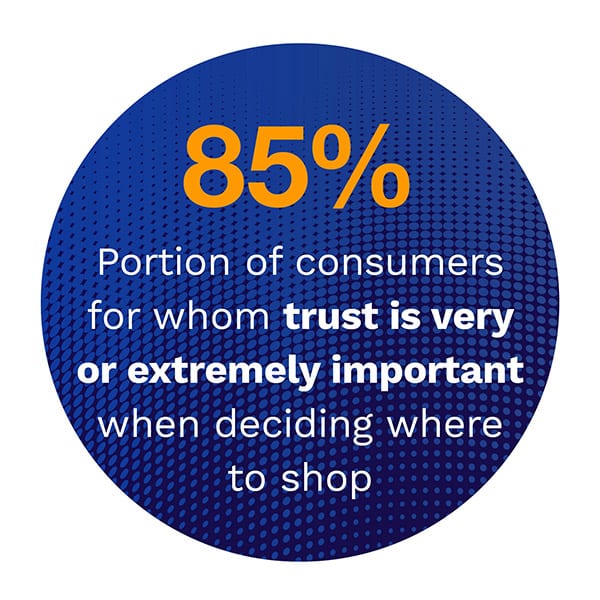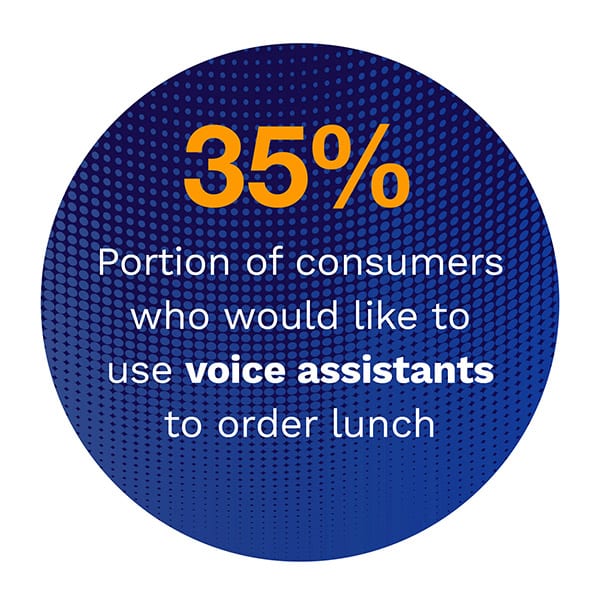NEW REPORT: How Voice Assistants Help Win Consumer Spend – And Their Trust

 More than 100 million consumers in the United States have switched from shopping in stores to shopping online since the pandemic began, and 83 percent of them plan to keep shopping with merchants they have discovered since then, even after the crisis has subsided.
More than 100 million consumers in the United States have switched from shopping in stores to shopping online since the pandemic began, and 83 percent of them plan to keep shopping with merchants they have discovered since then, even after the crisis has subsided.
In other words, there are more than 83 million new eCommerce shoppers whom merchants have the opportunity to turn into long-term customers.
The only question is: What do retailers have to do to win them over?
 There are countless factors consumers look for when browsing new eCommerce sites — factors that can help them decide whether to trust new eTailers enough to buy their products. Many consumers consider familiar payments brands like Google Pay and Amazon Pay to be a sign of trustworthiness, while others look at the overall quality of a site when deciding whether to buy from it. Still others prefer to only buy from sites that their friends and family have recommended, and others consider all of these factors and more.
There are countless factors consumers look for when browsing new eCommerce sites — factors that can help them decide whether to trust new eTailers enough to buy their products. Many consumers consider familiar payments brands like Google Pay and Amazon Pay to be a sign of trustworthiness, while others look at the overall quality of a site when deciding whether to buy from it. Still others prefer to only buy from sites that their friends and family have recommended, and others consider all of these factors and more.
Convincing consumers to click “buy” for the first time is only the first step, however. It is also crucial that merchants follow up by ensuring their customers have a positive overall shopping experience from the first click to delivery.
PYMNTS’ The Digital Shift: Consumer Trust Playbook takes a close look at the myriad ways in which the mid-pandemic shift to digital commerce has changed how retailers interact with their customers, how they can make sure they are delivering the digital shopping experience their customers expect, and why doing both is critical to retaining new customers during the pandemic and beyond.
Many merchants are in the middle of a journey to digitize their operations and boost sales, but there is no one-size-fits-all approach to how merchants should accomplish this. This is further complicated by the fact that different retailers are going into this crisis at different stages in their digital development. Some retailers have had eCommerce sites for years and are simply working to enhance the digital capabilities they have, while others are starting from scratch. This leaves many in the dark about the specific steps they should take to optimize their operations for their particular circumstances.
While every business is different, there are certain insights that all can use to help guide their digital transformations and customer-retention strategies. One is to provide channels through which customers can interact with employees in real time. This might mean having live video chats on their laptops from home, or it might mean offering guided shop tours that consumers can schedule online. Such features can serve the dual purpose of providing customers with digital access to retailers’ products and supporting the human connection formed between customers and their store associates — the kind of connection that consumers  are accustomed to getting in brick-and-mortar shops.
are accustomed to getting in brick-and-mortar shops.
Another rule of thumb that merchants can follow to optimize their user experience is to provide digital features that can help support an ecosystem of connected experiences. This might mean adopting a specialized mobile app or implementing voice assistant features — tools that can enable customers to interact with a broad assortment of products and services at once.
Using mobile apps that support voice assistant functionality can be an especially powerful combination for food sellers, in fact. Research shows that 35 percent of all consumers are interested in using voice assistants to order lunch, and many more would like to use them to order other takeout options.
Technologies like these, and many more, can go a long way in ensuring that customers get the type of seamless, enjoyable online shopping experiences they expect — but they are only a few among many.
To learn more about the types of features eCommerce merchants can provide to inspire trust in new shoppers and retain their current customers, download the Playbook.